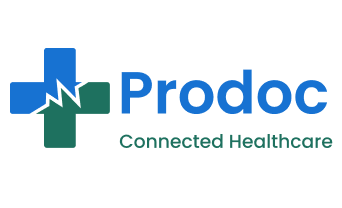WordPress could be the most flexible content management system, running more than 40% of all existing websites. It does provide a user interface to the least techie person, who could create and manage the website so easily. The platform consists of two versions: WordPress.org and WordPress.com.
Key Features of WordPress
- Customizability: WordPress provides a vast repository of themes and plugins. Themes allow users to change the look and feel of their website, while plugins enhance functionality.
- Flexibility: WordPress supports various types of websites, including blogs, e-commerce sites, portfolios, forums, and more.
- SEO-Friendly: The CMS is optimized for search engine performance, with features that make it easy to manage SEO settings and improve online visibility.
- Community Support: WordPress has a strong, active community. Users can find forums, tutorials, and extensive documentation to assist with troubleshooting and development.
- Open-Source: As an open-source platform, WordPress is free to use and modify, encouraging innovation and collaboration among developers.
Advantages of Using WordPress
- Ease of Use: The dashboard and visual editors make it easy for users to draft, edit, and publish content without needing to write code.
- Scalability: WordPress sites can scale from small blogs to large corporate websites.
- Cost-Effective: Many themes and plugins are available for free, reducing the overall cost of website development.
- Security Updates: Regular updates are released, keeping websites secure against vulnerabilities.
Common Use Cases for WordPress
- Personal Blogs: Starting a blog is straightforward with built-in publishing tools and customizable themes.
- E-Commerce Sites: Plugins like WooCommerce enable robust e-commerce capabilities, supporting multiple payment gateways and inventory management.
- Business Websites: Corporate sites benefit from custom themes, providing a professional appearance and advanced features.
- Portfolios: Artists, photographers, and other creatives can showcase their work using portfolio plugins and themes.
- Membership Sites: Plugins offer functionalities like member management, subscription plans, and content restrictions.
Where WordPress stands today reflects continuous evolution and updating and this wide namespace gives it the relevance. Democratizing web development, it has remained a darling for the user base spanning from persons who hardly know what web development is, to seasoned developers.
The Role of Web Developers in the Age of WordPress
With the contemporary web development environment and with the emerging deluge of tools like WordPress, it might be said that the professional web developers find it both an opportunity and a challenge. It is true; WordPress is a very powerful and flexible platform, but the wording “web developers are no longer needed” is not correct. Instead, it only redefines them.
Customization and Unique Requirements
WordPress offers a wide array of plugins and themes, but many businesses seek unique features that require custom coding. Web developers are crucial for:
- Developing bespoke themes and plugins to meet specialized needs.
- Ensuring that the website maintains performance standards despite customizations.
- Tailoring functionalities that go beyond the default capabilities of WordPress.
Security and Maintenance
Security is a significant concern for any online presence. Professional developers:
- Conduct regular security audits to identify and mitigate vulnerabilities.
- Customize security measures beyond what standard plugins offer.
- Keep abreast of the latest security practices and updates.
Performance Optimization
Web developers play a pivotal role in optimizing the performance of WordPress websites. They handle tasks such as:
- Streamlining code to enhance load times and server performance.
- Implementing advanced caching techniques.
- Conducting performance audits to identify and address bottlenecks.
Complex Integrations
Many businesses require integration with third-party systems such as CRMs, ERPs, and payment gateways which demand:
- Writing custom API integrations.
- Ensuring seamless data synchronization between systems.
- Managing complex workflows that standard plugins cannot handle.
SEO and Analytics
Search Engine Optimization (SEO) and analytics configurations are critical for digital success. Developers contribute by:
- Implementing advanced SEO techniques.
- Configuring enhanced analytics tracking beyond basic setups.
- Ensuring compliance with latest SEO guidelines and practices.
Accessibility and Compliance
Professional web developers ensure websites are accessible to all users and compliant with legal standards. They focus on:
- Enforcing accessibility standards such as WCAG.
- Conducting compliance audits.
- Implementing necessary adjustments to meet legislative requirements.
Even though WordPress for many occupies the places of DIY, businesses that want to really realize the potential of their online presence require the involvement of professional web developers-from basic customization up to security and performance, ending with compliance-their expertise will continue to shape the field of web development and design.
Key Features and Flexibility of WordPress
WordPress is renowned for its vast array of features and its unparalleled flexibility in web design and development. This section delves into the core components that enable WordPress to cater to a diverse range of users and applications.
Customizable Themes and Templates
- Thousands of Themes: WordPress offers a multitude of free and premium themes, enabling users to select a design that fits their brand.
- Template Hierarchy: Its robust template hierarchy allows developers to create and modify page templates, providing precise control over the site’s structure and appearance.
- Responsive Design: Most WordPress themes are built to be mobile-friendly, ensuring seamless display across various devices.
Plugin Ecosystem
- Extensive Plugin Library: With over 58,000 plugins in the official repository, users can add functionality without extensive coding.
- Ease of Integration: Plugins ease the integration of various utilities like SEO tools, social media sharing, contact forms, e-commerce solutions, and more.
- Custom Plugin Development: For unique requirements, developers can create custom plugins to tailor website functionality.
Content Management System (CMS)
- User-Friendly Interface: The WordPress CMS is designed for ease of use, allowing non-technical users to manage content effortlessly.
- Flexible Content Types: Custom post types, taxonomies, and custom fields enable the creation of varied content beyond standard blog posts and pages.
- Media Management: The built-in media library facilitates managing images, videos, and other media with ease.
Developer-Friendly Features
- Open Source: Being an open-source platform, WordPress allows developers to modify the core code and contribute to its evolution.
- Robust API: WordPress REST API facilitates interaction with third-party applications, enhancing integration capabilities.
- Custom Hooks: Filters and actions allow developers to extend core functionalities without altering the base code.
Security
- Regular Updates: Frequent updates ensure that security vulnerabilities are addressed promptly.
- Security Plugins: Plugins are available to enhance security measures, such as firewalls and malware scanning.
- User Roles: Granular control over user permissions helps in safeguarding the backend.
SEO and Performance
- SEO-Friendly: Built-in features and plugins help optimize content for search engines.
- Performance Optimization: Themes and plugins can be tuned for speed and efficiency, ensuring quick load times and smooth performance.
- Caching and CDN Integration: Tools for caching and integrating with content delivery networks (CDNs) further enhance performance.
WordPress’ rich feature set and flexibility make it a powerful tool for both novice users and seasoned developers, facilitating the creation of versatile and dynamic websites.
Advantages of Using WordPress for Web Design
WordPress offers numerous advantages for web design, which make it a popular choice among developers and designers alike.
- User-Friendly Interface: The intuitive and easy-to-navigate dashboard enables users of all skill levels to manage and update their websites without extensive technical knowledge.
- Extensive Theme Library: With thousands of both free and premium themes available, WordPress allows for significant customization, ensuring that websites can be tailored to meet specific design needs and preferences.
- Plugin Ecosystem: WordPress boasts a vast repository of plugins that extend functionality. From SEO optimization and security enhancements to social media integration and e-commerce capabilities, plugins cater to a diverse range of requirements.
- SEO-Friendly Features: Built-in SEO features and additional plugins like Yoast SEO help websites rank higher on search engine results pages (SERPs). This ensures better visibility and increased traffic.
- Responsive Design: Many WordPress themes are designed to be responsive, ensuring that websites look and function well on various devices, from desktops to smartphones.
- Community Support: Given its large and active user base, WordPress benefits from strong community support. Users can access forums, tutorials, and documentation to troubleshoot issues or learn new skills.
- Cost-Effective Solution: WordPress itself is open-source and free to use. Coupled with affordable hosting solutions and a variety of free themes and plugins, it represents a cost-effective solution for individuals and businesses.
- Regular Updates: Frequent updates ensure that WordPress stays current with the latest web standards and security protocols, offering a safer and more efficient platform.
- Flexibility and Scalability: Suitable for a range of websites from small blogs to large online stores, WordPress can scale alongside the growth of a business, accommodating increased traffic and expanded functionality over time.
- Multilingual Capabilities: With plugins like WPML and Polylang, WordPress supports the creation of multilingual websites, making it easier to reach a global audience.
“The ease of managing content and the vast customization options available have solidified WordPress’s place as a preferred platform for web design.”
These advantages collectively make WordPress a powerful and versatile tool for web design, effectively meeting the diverse needs of users and developers.
Limitations and Challenges of Relying Solely on WordPress
Relying exclusively on WordPress presents a variety of limitations and challenges that must be considered by organizations and individuals aspiring to build or maintain robust websites.
Scalability Issues
- Performance Bottlenecks: High-traffic websites can experience performance degradation. As user demand grows, caching mechanisms and server optimizations become essential.
- Database Limitations: With increasing data, WordPress’s MySQL database can become a bottleneck, causing slower response times.
Security Concerns
- Frequent Vulnerabilities: The open-source nature makes it a frequent target for hackers. Timely updates are crucial, but may not always suffice.
- Plugin and Theme Risks: Using third-party plugins and themes introduces potential security risks. Not all developers follow best security practices.
Customization Constraints
- Limited Flexibility: Out-of-the-box customization may not be sufficient for unique, complex requirements. Custom coding is often necessary.
- Theme and Plugin Dependencies: Heavy dependence on themes or plugins can limit design flexibility and functionality.
Maintenance Overheads
- Regular Updates: Core, theme, and plugin updates are essential for security and functionality, but can be time-consuming.
- Compatibility Issues: Updates can sometimes lead to compatibility problems, causing functionalities to break.
Technical Limitations
- SEO Customization: While WordPress offers basic SEO features, advanced optimization often requires additional plugins and expertise.
- Performance Optimization: Achieving optimal performance demands in-depth knowledge of not just WordPress, but also web hosting, CDNs, and other web technologies.
User Experience
- Learning Curve: Users without a technical background may find it challenging to navigate and utilize all of WordPress’s features effectively.
- Support Limitations: Relying on free support forums can be inefficient. Paid support is often necessary for timely and effective solutions.
Design Challenges
- Template Limitations: Pre-made themes may not align perfectly with branding guidelines, necessitating additional custom design work.
- Uniqueness Issues: Sites built with popular themes can lack originality, potentially affecting brand perception.
E-Commerce Complexities
- WooCommerce Integration: While WooCommerce extends e-commerce capabilities, it comes with its own set of challenges such as performance issues and additional security concerns.
- Payment Gateways: Integrating diverse payment options securely requires extensive configurations and optimizations.
Long-term Considerations
WordPress may not be the best solution for highly customized projects or those requiring advanced features beyond what standard plugins and themes offer.
The Importance of Custom Development in Modern Websites
Custom development has grown to be very paramount in the context of the modern digital world. As powerful and easily usable software like WordPress may be, the high need for features that would be unique in design and functionalities arises. Custom development will provide features that will be exclusive to business innovation, through which businesses will offer differentiated experiences that prebuilt themes and plugins cannot fully realize.
Key Advantages
- Unique Branding: Custom development permits the creation of unique, brand-specific websites that align perfectly with a company’s identity. Unlike generic templates, custom solutions can incorporate distinctive design elements and functionalities.
- Scalability: Custom solutions can be tailored to grow with the business. As traffic increases or services expand, custom websites can be optimized for performance, integrated with other systems, and updated without the limitations of pre-built solutions.
- Flexibility: With custom development, there are no constraints set by third-party themes or plugins. Businesses can implement precisely what they need without compromise, incorporating unique features that wouldn’t be possible otherwise.
- Security: Custom-built websites can incorporate advanced security measures tailored specifically to the business’s needs. By avoiding widely-used templates and plugins, the risk of common vulnerabilities is reduced.
Practical Applications
- E-commerce Websites: Online stores require personalized experiences to enhance user engagement and encourage sales. Custom design and development can provide unique check-out processes, personalized recommendations, and seamless integrations with inventory systems.
- Content-Driven Sites: Publishers, media companies, and bloggers can benefit from custom solutions that offer advanced content management functionalities, tailored options for advertising, and enhanced user experience.
Custom development ensures that a website meets specific business goals while providing the scalability and flexibility needed in a fast-evolving digital world.
Challenges Addressed
- Complex Integrations: Custom development facilitates the integration of various third-party services like CRMs, ERPs, and other specialized tools. Pre-built platforms might struggle with complex integrations, whereas custom solutions are engineered to fit seamlessly.
- Optimized Performance: Performance is critical for user experience and SEO. Custom-developed websites can be fine-tuned to achieve optimal load times and respond efficiently under high traffic conditions.
Industry Relevance
With today’s highly competitive market, having one’s difference can be considered as a life jacket for businesses. Indeed, this custom development permits businesses to construct engaging, innovative, and secure websites that would be hard to emulate with generic platforms. For this reason, companies will have a strong, flexible, and highly unique online presence once they consider leveraging custom development. This would, therefore, make it easier to stay competitive and also respond quickly to any changes within the market.
Comparing WordPress Themes and Custom-Built Designs
Choosing between WordPress themes and custom-built designs requires evaluating several factors. WordPress themes offer a variety of built-in features and are often more budget-friendly. Custom-built designs, although generally more expensive, provide greater flexibility and uniqueness.
WordPress Themes
Key Advantages:
- Cost-Effective: Pre-built themes often cost significantly less than custom designs.
- Ease of Use: These themes are generally user-friendly and include extensive documentation.
- Rapid Deployment: Websites can be set up quickly with minimal customization.
- Extensive Support: Popular themes offer robust community support and frequent updates.
- Integrated Features: Many themes come with built-in plugins, saving development time.
Potential Drawbacks:
- Limited Customization: Themes provide fewer options for unique design and functionality.
- Generic Appearance: Widely used themes may create a less distinctive look.
- Overhead Code: Themes sometimes include unnecessary code that can slow down site performance.
Custom-Built Designs
Key Advantages:
- Unique Branding: Custom designs ensure that the website aligns perfectly with brand identity.
- Enhanced Flexibility: Tailored solutions can accommodate specific functional requirements and user experiences.
- Optimized Performance: Custom coding enables leaner and more efficient websites.
- Scalability: Custom websites can be designed with future growth in mind, allowing for easier upgrades.
Potential Drawbacks:
- Higher Costs: The development and maintenance of custom sites are usually more expensive.
- Longer Timeline: Creating a custom website involves a more extensive development process.
- Ongoing Maintenance: Custom sites may require regular adjustments from developers for updates and bug fixes.
In Summary
And that’s the essential thing: the choices between WordPress themes and custom designs are very much dependent upon a project’s specific needs and budget, not to mention its goals. Themes can most certainly serve a massive amount of general needs with a certain cost-effectiveness, while custom design serves much more specific and unique ones with a big lot of flexibility, as well as performance tailored to business goals. The choice really matters when considering the overall experience, performance, and scalability of a website. This, however, picks up the best approach upon consideration of trade-offs and long-term implications.
The Future of WordPress: Trends and Innovations
WordPress is at the forefront of technological advancements, continually evolving to meet modern web development needs. Examining current trends and future innovations provides insight into how WordPress might redefine web development.
1. Full Site Editing (FSE)
Full Site Editing is transforming WordPress by offering more comprehensive control over website design through the Gutenberg block editor. This innovation moves beyond posts and pages, enabling users to customize headers, footers, and other theme components seamlessly.
2. Artificial Intelligence and Machine Learning
AI and machine learning are being integrated into WordPress, introducing capabilities like automated content suggestions and enhanced SEO tools. These technologies aim to streamline workflows by recommending optimal content structures and keywords based on analytics.
3. Enhanced Security Features
With the rise of cyber threats, WordPress prioritizes security enhancements. Innovations include two-factor authentication, improved encryption protocols, and automated malware scanning. These features protect websites and provide peace of mind to developers and site owners.
4. Progressive Web Apps (PWAs)
WordPress is leading the adoption of Progressive Web Apps, which offer a native app-like experience within browsers. PWAs enhance website performance, increase engagement, and ensure offline access, making them crucial for future-ready websites.
5. Headless WordPress
The headless CMS architecture decouples WordPress’s front-end from the back-end, allowing developers to use any technology to deliver content. This flexibility caters to the needs of modern web applications, ensuring faster performance and easier integration with various platforms.
6. Integration with IoT
Integration with the Internet of Things (IoT) is expanding WordPress’s capabilities. WordPress can now manage smart devices and connect to IoT platforms, providing interactive and dynamic user experiences that were previously unimaginable.
7. Voice Search Optimization
Voice search technology is reshaping SEO and content strategies. WordPress integrates tools for voice search optimization, ensuring that content is accessible and responsive to voice commands, aligning with the increasing use of digital assistants.
8. Improved User Experience (UX)
A strong emphasis on user experience drives WordPress development. Innovations include drag-and-drop builders, enhanced mobile responsiveness, and intuitive interfaces, allowing developers of all skill levels to create highly functional, user-friendly websites.
9. Eco-Friendly Web Development
Sustainable practices in web development are gaining momentum. WordPress is investing in eco-friendly hosting solutions and optimization techniques that reduce energy consumption and carbon footprint, committing to a sustainable digital future.
WordPress’s continuous evolution and focus on cutting-edge trends position it as a critical tool in the future of web design, accommodating both developers and non-developers in creating sophisticated, secure, and user-friendly websites.
How Web Developers and WordPress Can Coexist
Web developers and WordPress need not be at odds; instead, they can complement each other in several ways:
Customization and Flexibility
- Theme Development: Web developers can create custom themes tailored specifically to client needs.
- Custom Plugins: Developers can build unique plugins to extend the functionalities of WordPress sites.
- API Integration: Developers can integrate third-party services through APIs, enhancing site capabilities.
Enhanced Security
- Security Audits: Web developers can perform regular security audits to ensure the site remains secure.
- Custom Security Solutions: Developers can implement security features beyond what standard plugins offer.
- Regular Updates: Keeping themes and plugins up to date is crucial, and developers can automate and manage this process.
Improved Performance
- Optimized Coding: Developers can optimize HTML, CSS, and JavaScript for faster loading times.
- Server Configuration: Advanced server settings and configurations can be managed by web developers.
- Database Management: Efficient database queries and management can improve site performance.
Advanced SEO Techniques
- Customized SEO Strategies: Developers can implement specific SEO tactics that go beyond default WordPress options.
- Performance Metrics: Monitoring tools and techniques can be employed to constantly improve SEO results.
- Schema Markup: Adding custom schema markup can help search engines understand and index site content better.
Complex Projects
- Large Scale E-commerce: Developers can handle the complexities of large e-commerce sites, which often go beyond the default WordPress capabilities.
- Bespeak Functionality: Custom functionality for unique business needs can be developed.
- Enterprise Solutions: Large organizations may require tailored solutions that standard WordPress packages can’t offer.
Collaboration Opportunities
- Project Management: Developers can manage more complex projects that involve multiple stakeholders.
- Team Collaboration: Coordinating with designers, marketers, and content creators can ensure the project meets business goals.
- Maintenance and Upkeep: Ongoing support and maintenance services can be provided by developers, ensuring long-term site health.
User Training and Consulting
- Client Training: Developers can train clients on how to effectively use and manage their WordPress site.
- Ongoing Consultation: Continuous consultancy can help businesses adapt and thrive in an evolving digital landscape.
- Technical Support: Offering round-the-clock technical support ensures that any site trouble is addressed promptly.
By leveraging the strengths of both web developers and WordPress, businesses can achieve a well-rounded, robust online presence. Each party brings unique advantages to the table, making them indispensable in delivering high-quality, customized solutions.
The Impact of AI and Automation on Web Development
Artificial Intelligence (AI) and automation have dramatically transformed web development. AI-driven tools and platforms are increasingly integrated into development workflows, allowing for higher efficiency, better user experiences, and predictive functionalities.
Key Aspects of AI in Web Development
- Enhanced User Experience:
- AI algorithms analyze user behavior to personalize websites.
- Machine learning models predict user needs and adjust content dynamically.
- Automated Coding and Debugging:
- AI systems can generate code based on predefined parameters and past examples.
- Automated debugging tools can identify and rectify code issues faster than human developers.
- Voice and Chat Interfaces:
- Natural Language Processing (NLP) enables the creation of sophisticated voice and chat interfaces.
- AI empowers customer service chatbots, providing immediate responses and improving user engagement.
Advantages of Automation
- Efficiency:
- Automation tools streamline repetitive tasks like testing and deployment.
- Automated systems can work continuously without fatigue, enhancing productivity.
- Consistency:
- Automated processes ensure consistency in coding standards and project workflows.
- Automated deployment reduces the risk of human error during release cycles.
- Scalability:
- Automation can handle growing data volumes and increasing complexity effortlessly.
- Scalable solutions driven by AI accommodate more users without compromising performance.
AI-Driven Design
- AI-Powered Design Tools:
- Tools like Adobe Sensei suggest design improvements and automate image editing.
- AI-driven platforms offer design recommendations based on user inputs.
- Responsive Design Improvements:
- AI algorithms assist in creating responsive designs that adapt to various devices and screen sizes.
- Automation in design can ensure a seamless user experience across platforms.
Concerns and Challenges
- Job Displacement:
- There’s apprehension about potential job losses due to increased automation.
- However, new roles focusing on AI management and oversight are emerging.
- Data Privacy:
- AI systems often require extensive user data, raising privacy concerns.
- Compliance with privacy regulations like GDPR is crucial.
AI and automation’s role in web development continues to grow, shaping the industry’s future and influencing the demand for traditional web development skills.
Case Studies: Successful Integrations of WordPress and Custom Development
WordPress, when paired with custom development, has become a powerful tool for creating versatile and highly functional websites. The following case studies showcase how different organizations have successfully combined WordPress with bespoke development to achieve their unique web design goals.
1. The New Yorker
The New Yorker utilized WordPress to overhaul its vast content library and provide an improved reader experience. While WordPress handled the content management efficiently, custom plugins were developed to cater to the specific needs of writers and editors. These plugins enabled easy content formatting, seamless media embedding, and streamlined editorial workflows. This fusion of WordPress with custom development ensured that The New Yorker maintained its distinctive style and high-quality content presentation.
2. BBC America
BBC America chose WordPress for its scalability and customization potential. Custom APIs were integrated with WordPress to pull in content from various sources and display it dynamically. Custom themes were designed to reflect the network’s brand identity, while specialized widgets were developed to display real-time social media feeds and video content. This resulted in a robust, highly interactive website that enhanced user engagement and streamlined content distribution.
3. Bata Shoes
Bata Shoes required an e-commerce solution that could handle large traffic spikes during sales. By leveraging WordPress with WooCommerce and custom-developed features, the site achieved high performance and reliability. Custom integrations with payment gateways and inventory management systems ensured smooth operations. The flexible architecture allowed for localized versions of the website, catering to different geographies with specific currencies and languages.
4. MIT Media Lab
MIT Media Lab needed a flexible platform to showcase their innovative projects. WordPress served as the foundation, while custom post types and taxonomies were developed to manage and display a wide array of research projects. Advanced filtering options were implemented, allowing users to easily navigate through the extensive project database. The custom development ensured that the website could continuously evolve to reflect new technological advancements and research outputs.
5. Angry Birds
The official website for Angry Birds required a blend of dynamic content and interactive features. WordPress’s user-friendly interface allowed for frequent content updates, while custom JavaScript animations and HTML5 games were integrated to engage visitors. The combination of WordPress’s content management capabilities with bespoke interactive elements created a playful and immersive user experience, aligning perfectly with the brand’s identity.
These case studies illustrate how WordPress, complemented by custom development, can resolve specific requirements, deliver high-performance solutions, and provide engaging user experiences.
Training and Skill Development for Future Web Designers
In an ever-evolving digital landscape, aspiring web designers must equip themselves with a diverse array of skills and knowledge to stay competitive. Traditional design principles remain foundational, but new competencies are increasingly critical.
Professional training programs and educational courses offer structured learning paths:
- User Experience (UX) and User Interface (UI):
- Focus on creating intuitive and engaging user interfaces.
- Principles of usability, accessibility, and human-centered design.
- Responsive and Adaptive Design:
- Ensuring websites are functional and aesthetically pleasing on various devices.
- Mastery of fluid grids, flexible images, and media queries.
- Front-End Development:
- Proficiency in HTML, CSS, and JavaScript.
- Understanding of frameworks and libraries like React, Vue.js, and Angular.
- Content Management Systems (CMS):
- Deep knowledge of platforms such as WordPress, Joomla!, and Drupal.
- Custom theme development and plugin integration.
Continual professional growth is crucial. Web designers need to adopt a mindset of lifelong learning to keep pace with technological advancements and changing market demands.
- Workshops and Boot Camps:
- Intense, short-term programs focusing on specific skillsets or technologies.
- Opportunities for hands-on project work and real-time feedback.
- Certifications and Badges:
- Industry-recognized credentials in areas such as UX design, front-end development, or CMS proficiency.
- Validation of expertise and commitment to professional standards.
- Professional Communities and Networking:
- Engagement with peers through forums, conferences, and online communities.
- Sharing best practices, trends, and job opportunities.
Mentorship and real-world experience are equally important. Pairing theoretical knowledge with practical application helps bridge the gap between learning and doing. Engaging in freelance projects, internships, or contributing to open-source projects can provide invaluable experience.
In an industry shaped by rapid technological shifts, web designers must develop a skillset that is both broad and deep, ensuring they can adapt and thrive in a future-oriented market.
Conclusion: The Collaborative Future of Web Development
The future of web development lies in a collaborative environment where WordPress and web developers work in tandem to create powerful, user-friendly websites. Leveraging the strengths of both WordPress and traditional web development can lead to innovative, efficient, and scalable solutions.
- WordPress as a Foundation:
- Many new projects utilize WordPress as a base for content management and basic functionality.
- Its extensive library of plugins and themes provides developers with a versatile toolkit.
- Role of Web Developers:
- Web developers bring expertise in customizing and extending WordPress beyond its out-of-the-box capabilities.
- Skills in HTML, CSS, JavaScript, and other programming languages are crucial for creating custom themes and plugins.
- Evolving Skill Sets:
- As WordPress continues to evolve, developers must stay updated with its changes and improvements.
- Continuous learning ensures that developers can harness new WordPress features and integrate them effectively.
- Customization and Bespoke Solutions:
- Clients often require unique features and custom functionalities that go beyond standard WordPress offerings.
- Developers play a critical role in tailoring solutions that meet specific business needs, providing a competitive edge.
- Integrating Third-Party Services:
- Many projects benefit from integrating third-party services and APIs, which requires expert handling.
- Developers are essential for ensuring smooth integration and maintaining site performance and security.
- User Experience (UX) and Design:
- While WordPress offers pre-designed themes, developers are needed to craft unique user experiences.
- Custom design and UX work can significantly enhance a site’s usability and aesthetic appeal, contributing to branding and user satisfaction.
- Performance and Optimization:
- Performance optimization is critical for user retention and SEO.
- Developers are adept at making necessary adjustments to code and configurations to ensure optimal performance.
The harmonious blend of WordPress’s accessible platform and the specialized expertise of web developers creates a robust framework for future web projects. This symbiotic relationship enables the crafting of websites that are not only functional and aesthetically pleasing but also scalable and secure.











